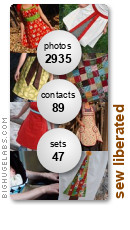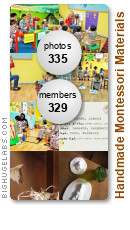Upload photos of your Montessori creations to the new Flickr group!

Sharing photos of our handmade Montessori materials - an easy way to pass on ideas and inspiration!
I've finally figured out this Flickr photo sharing business. Can you see the new photo badge in the side bar? I used to host a Flickr photo badge in the same spot, but it linked to my personal account only. Good news ... I've just created a Flickr Group, under the name of Handmade Montessori Materials. Here's the direct link:
http://www.flickr.com/groups/montessorimaterials/
All you will need to do is create a free Flickr account if you don't have one already, upload photos of your own Montessori-related creations to your account, join Handmade Montessori Materials, and send your photos to the group.
Here's what I'm not totally clear about - I think that once you have your own account, you will need to somehow search "groups" for handmade montessori materials in order to join. The catch? The group won't show up on searches until it is reviewed as "safe" by the folks at Flickr. Try joining by clicking on the above link, but if it doesn't work, wait a while until you can find it on a search. Flickr says that the review shouldn't take more than a week.
Please let me know how your sign up process goes by leaving a comment on this post so that others can follow your advice.
P.S. You don't need to sign up to view the photos. Just click on the link toward the bottom of the photo badge.P.P.S. If you make a material, post a photo of your creation to the Flickr group. Period. No excuses. Think of it as a little bit of community service. Especially post the photos if you have made a material using one of the snazzy tutorials available on this blog. Or post photos of the materials/activities suggested in the blog in use in your classroom. Thank you, awesome readers! Let's spread the Montessori love!



























































